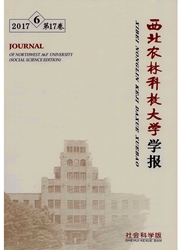

 中文摘要:
中文摘要:
内陆地区劳动力逆工资趋向流动与“民工荒”是两个不同的问题,为了厘清该问题出现的内在机理,运用序贯博弈和嵌套博弈的相关理论,采用近20年来相关最低工资标准和平均工资水平的统计数据,结合中国劳动力流动的历史阶段性和制度性背景,经过两个阶段的博弈推导,认为现阶段和未来劳动力流动方向的纳什均衡首先取决于政府选择“改善”民生的政策成本与其收益的权衡,其次取决于劳动力对除工资之外其他因素的评价,后者是子博弈完美均衡的直接决定因素。
 英文摘要:
英文摘要:
It is two different questions that inland labor flows by inverse wages trend and the "shortage of peas ant workers". In order to clarify the internal mechanism of the problems, the author utilizes sequential game and nested game theory as well as the recent twenty-year's statistical data on the minimum wage standard and the average wage level of related areas, combined with the history of China's labor flowing stages and institutional background, deduces by game theory through two stages and concludes that the Nash equilibrium of the present and the future labor flowing direction depends firstly on the comparison between the policy cost of the government choosing "to improve" the labor's livelihood and the income induced by that policy, secondly on the labor's evaluation of other livelihood factors besides wages while the latter is the directly determining factor for a sub game perfect Nash equilibrium.
 同期刊论文项目
同期刊论文项目
 同项目期刊论文
同项目期刊论文
 期刊信息
期刊信息
